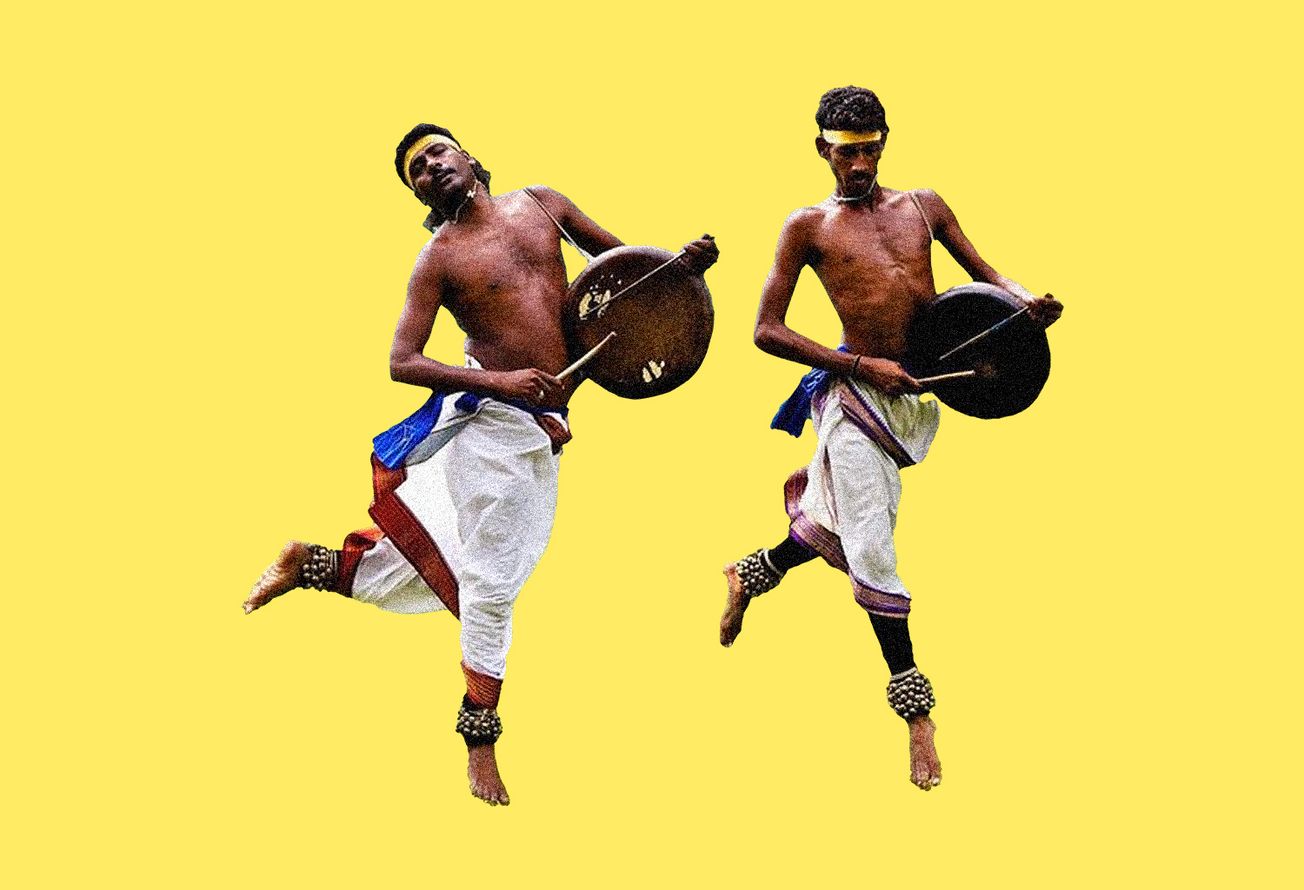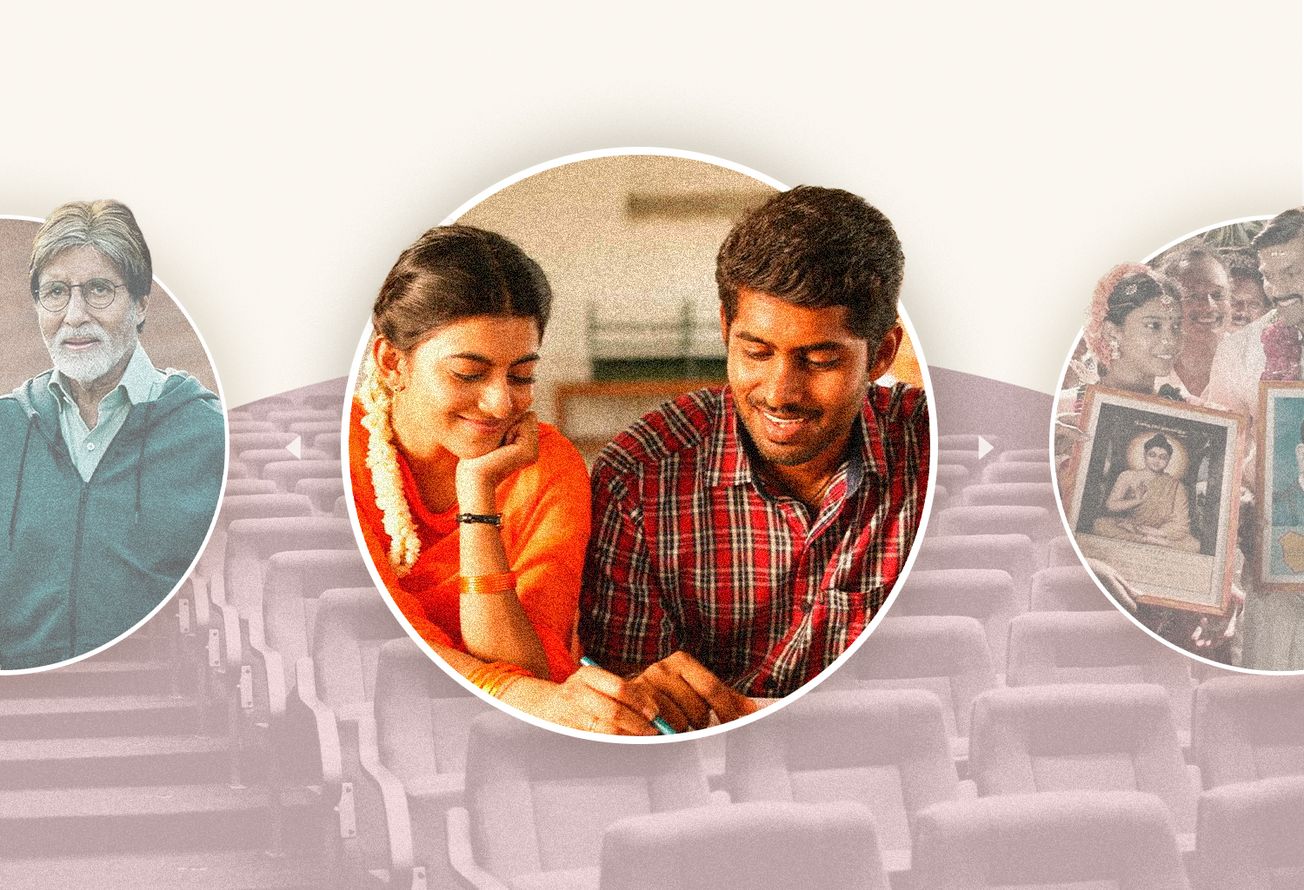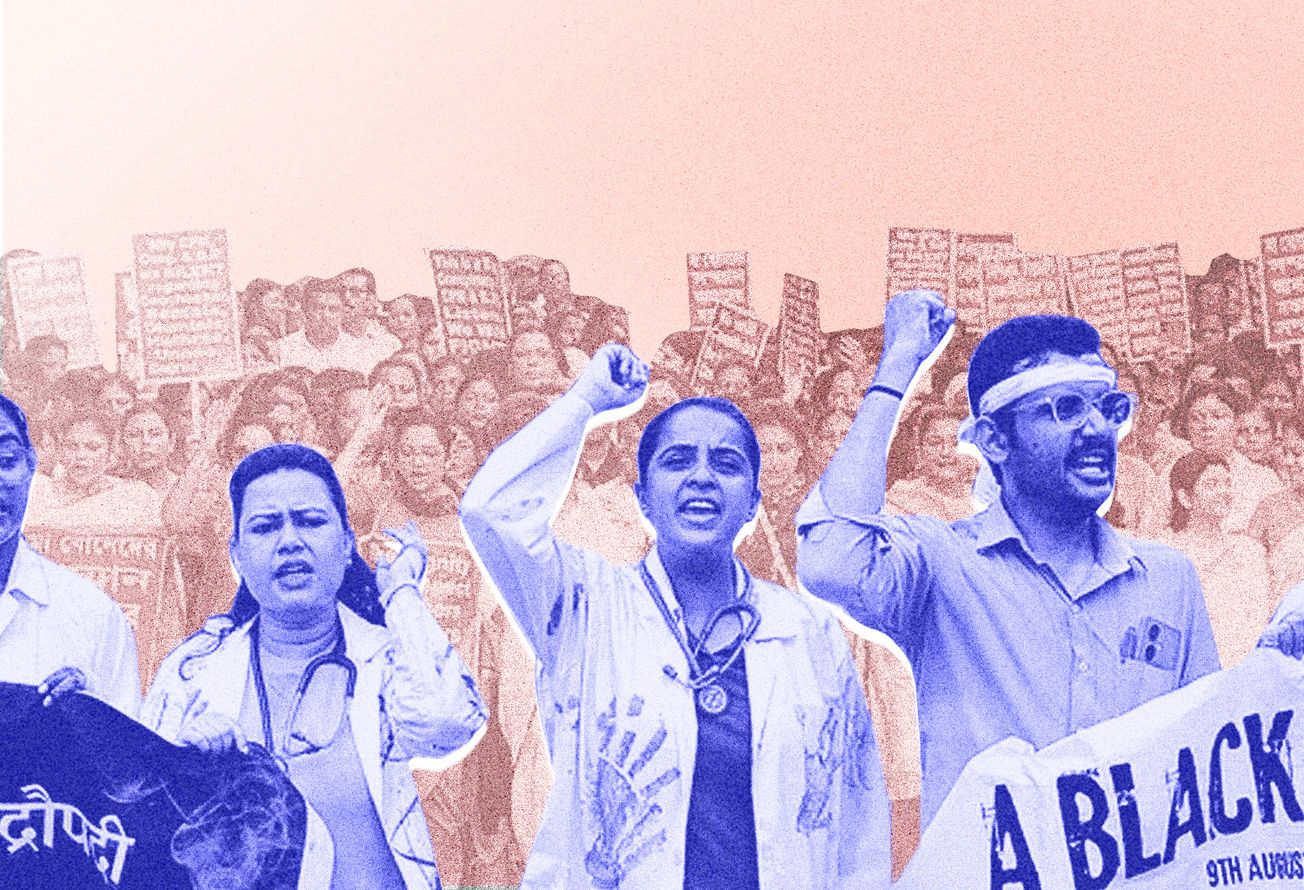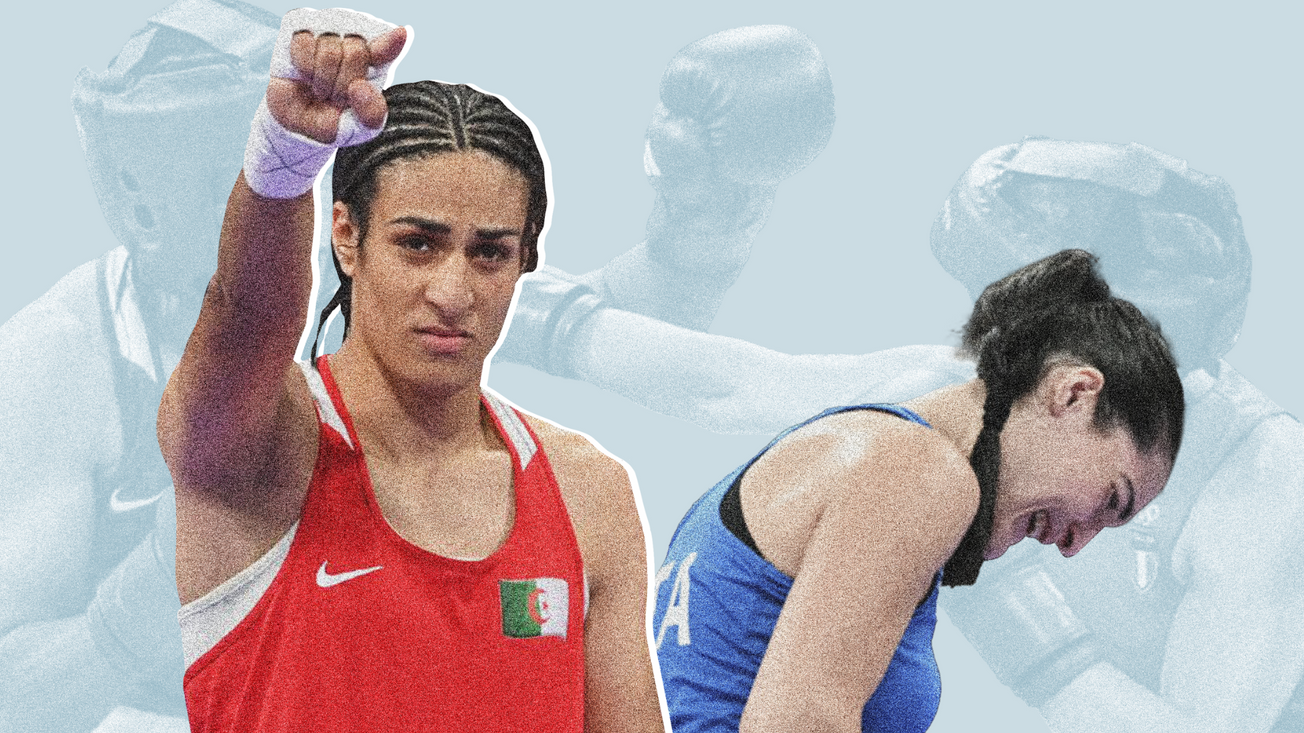Image Source: Hereditary dancers Bhanumathi and Varalakshmi from Kumbakonam, Tamil Nadu, on the cover page of a brochure about their Bharatnatyam recital. 1936
With intense fervour, our feet tapped, slid, and beat on the stone platform of the Thiruvarur Thyagesha temple. We felt a sense of urgency in our bodies—an urgency to not let a chance to embody history slip. We, students of "democratised" Bharatanatyam, were on a field trip to experience the sacred locus of a varnam—a musical composition in a traditional Bharatanatyam repertoire—one of the most challenging for dance students. The recital reverberated around us in Tamil:
Mogamana enmithil nee inda velayil modi seyyalamo en sami metu. Nagarigamana Thirunagaril vasare bhoga thyagesha anubhogam seyya va kitte.
“At such a time, when I am thus enamoured, is it fair to be indifferent to me, my lord. O Tyagesha, resplendent in the luxuries of the renowned city Tiruvarur, come and embrace me.”
To be corporeally enmeshed in the divine past so desired by Brahmanical tradition, we leapt, bent, glided, turned to the melody with the unburdened agility of our bodies—bodies sanctioned by the aura of the state-backed dance institution we were students of.
Our taut fingers drew the perfect arches of the nayika’s desire for the indifferent deity—desires which have been consecrated by Brahmanical choreographers eulogised by our national history. Coyly smiling, we played the role of devadasis enacting submissive femininity. All subversive edges of the sexual agency of the feminine were made palatable to Brahmanical morality through imageries of spiritual union of the jeevatma and paramatma (the human and divine souls). We, the diligent students, performed history inside the temple, fully aware that these dance and music forms were revered by people and institutionalised by the state.
What many dance aficionados still refuse to acknowledge is that there is integral violence in the term devadasi that can be traced back to European Orientalist literatures, and was later popularised by the Brahmanical appropriation of the discourse of Indian performing arts. This casteist and sexist term homogenises hereditary women performers' communities who come from very diverse geographical and caste locations. It refers to Bahujan dancers in courts and temples in the regions that are now the states of Tamil Nadu and Andhra Pradesh but also Dalit jogati-matamma community from the regions that are now known as Karnataka, Andhra Pradesh, and Maharashtra. In this article, we are taking a closer look at the history of traditionally quasi-matrilineal hereditary dancers’ communities from Tamil Nadu and Andhra Pradesh as Bharatnatyam was their dance form. The term devadasi is used here only to refer to the legal act of 1947 as well as to the violence wrought by the usage of this term in the discourse of Indian dance. It is more apt to describe these dancers as “hereditary dancers” or Bahujan court dancers. Non-hereditary dancers, such as myself, are more privileged than hereditary dancers as our dancing bodies have not been criminalized and we do not face social persecution for our identity.
The stigma of prostitution was attached to the term devadasi. Legitimised by the Brahmanical “reform” movement, it led to the exclusion of Bahujan women, who formed the communities of hereditary dancers, from dignified citizenship. The term triggers intergenerational traumatic memories in women from these communities. As Nrithya Pillai, hereditary dancer-singer-activist writes, “Not only did reform exacerbate extant problems around stigma and suspicion of women, it also marked the category devadasi with a new kind of negative publicity.”
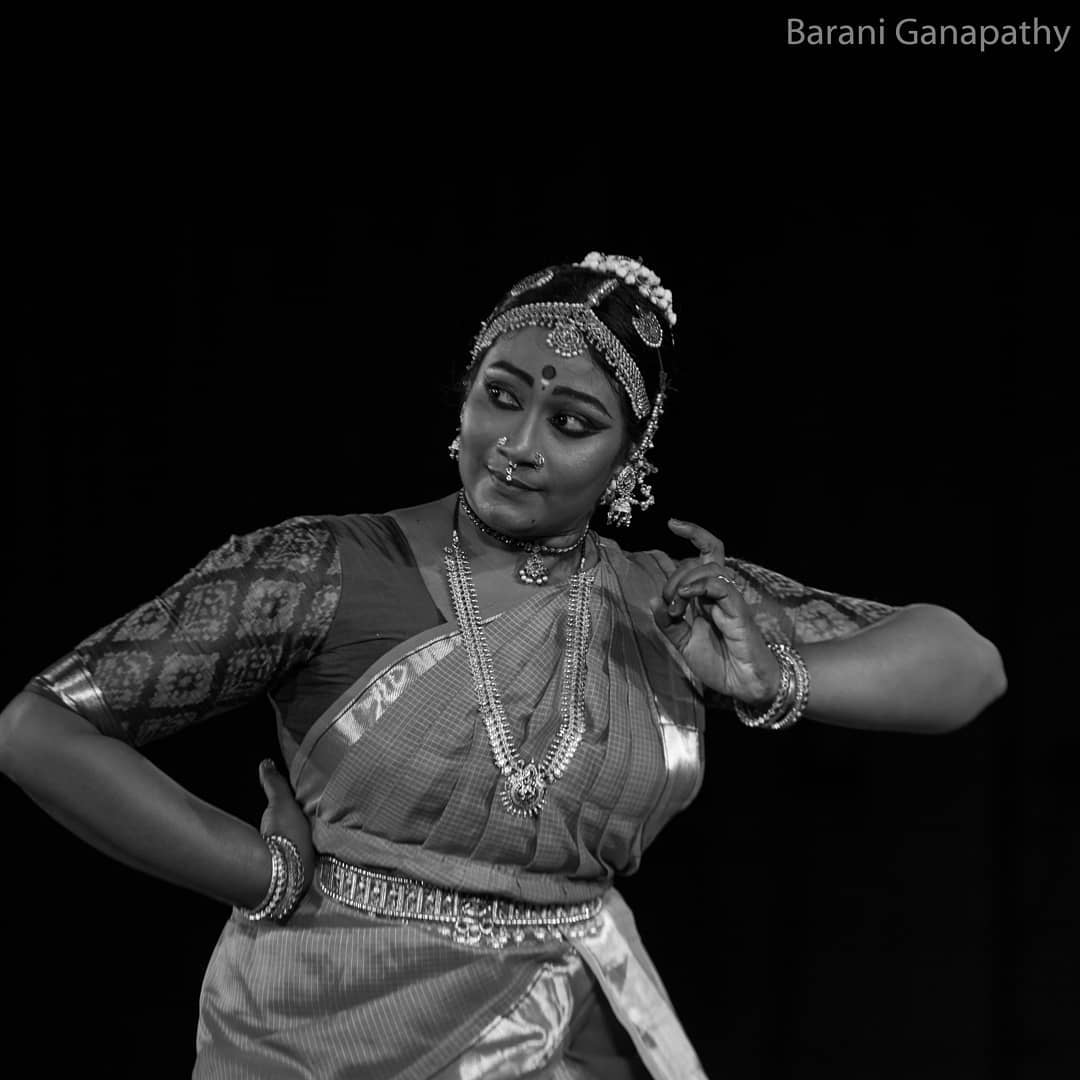
The Varnam we so zealously performed in the temple is believed to be an oeuvre of the composer-choreographer Ponnaiah Pillai—one of the four brothers who, in the nineteenth century, under the patronage of Tanjore and various other princely courts of Southern India formulated the pattern of Bharatanatyam performance the way we see it performed today.
In our rendition of the composition, “Devadasis”, with their sublime dances for the divinity, sing in the mystical language of their love for the deity. In this fanciful imagination of a golden Hindu past, the hereditary dancers owe their art to no one save the Supreme. It’s hard to tell at what point nineteenth century Tanjore under Maratha kings collapses into wishful Hindu fantasies of Nayaka rulers (1529-1736 AD) and the grand Chozha Tanjavur (848-1279 AD). Multiple anachronistic leaps after, the great Indian dream of a glorious timeless Vedic past starts to appear as dazzlingly real.
In effect, this narrative seamlessly erases the cosmopolitan and courtly origin of a multi-faceted genre like the varnam to establish it as sastric—a tradition that can be traced back to Brahmanical scriptures. This is how the history of every Indian “classical” dance form has been framed and written to suit the narrative of a golden Hindu past. Today, it’s this “classical” status of the dance form that brings funding and opportunities to its oppressor caste practitioners.
The figures of the Bahujan court dancers, women who are the rightful owners of this heritage, are pushed by this narrative into the dark abyss of the nation’s collective forgetfulness.
Too many anomalies remain unquestioned in this narration of history because of the servile torpor induced by classical aestheticism and Brahmanical pedagogy. The Tanjore Quartet was employed by the princely states to enrich a tradition of courtly entertainment but it is largely portrayed today as temple dance. The nineteenth-century Maratha Tanjore court with its kingship dependant on the British East India Company consisted of diverse cosmopolitan influences and audiences. However, there is a loud claim of a monolithic Hindu past for Bharatnatyam despite the well-documented presence of Muslim tawaifs and teachers from North India, English band music, and indigenous influences in the Tanjore court culture. Elaborate erotic genres like varnams were composed to be performed in the secular and political setting of courts but they are misleadingly framed as devotional compositions for Hindu temple deities. These widely accepted inconsistencies fall flat with very basic historical probing. Had “devadasis” been such “blessed women”, why did nationalist reformers from various political leanings get invested in abolishing the hereditary dancers’ livelihood, a project initiated by Christian missionaries to begin with.
In the first half of the twentieth century, social reform movements backed by the Indian National Congress as well as the non-Brahmanical self-respect movement aimed to rehabilitate these professional dancers as “respectable” women, either by marriage or by placing them in homes made for destitute women (saranalayam). Shaming and name-calling in popular culture as well as campaigns spearheaded by the first Indian woman medical graduate and a member of the Madras legislation Muthulakshmi Reddy and hereditary community members like Yamini Purnatilakam, Muvvalur Ramamirthamma, supported by Mohandas K. Gandhi on the one hand and Periyar on the other, led to the passing of the Madras Devadasis (Prevention of Dedication) Act of 1947. Popular history commemorates the stigma heaped on the Bahujan dancers and ‘deliverance’ of the dance from ruin by Brahmanical protectors, while advocacies against the abolition bill by hereditary dancers’ associations lie forgotten in the dusty annals of history.
Other states also adopted similar acts, effectively penalising the hereditary dancers for performing not only in temples (which only some of them used to do) but also in privately organised chamber concerts, ceremonies, festivals, public concerts or anywhere in the presence of an audience which was their primary profession.
The nation, in its zeal for modernity, accorded legitimacy to the stigma against the community in popular psyche and trampled all over the hereditary dancers’ right to a dignified life.
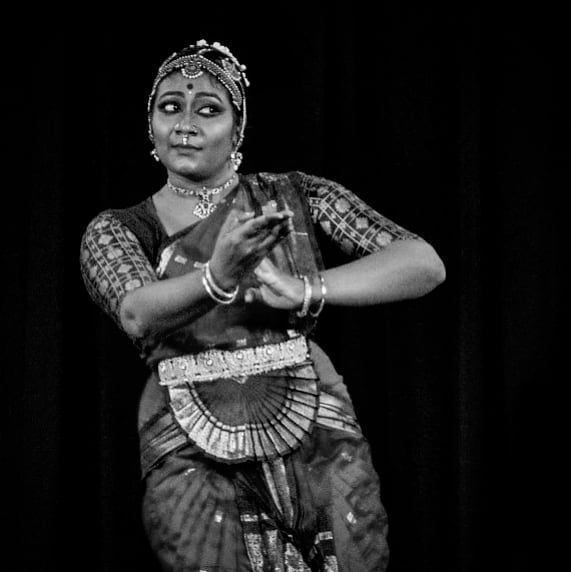
Measured against the yardsticks of the ideal national womanhood determined by the functional role of proliferation of caste lines and culture for the sake of a “healthy”/patriarchal and “respectable”/Brahminic state, the hereditary dancers’ were seen as leading lives of excess. The secular nation with its Brahmanical morality could not accommodate women whose sexuality transgressed the norms set by caste-endogamous marriages and whose autonomy allowed them access to social-political-economic and cultural capital. Women from hereditary dancers’ communities were targeted, to be shamed and "rescued".
The process of disenfranchisement of these women was also vital to the framing of a Brahmanical nationalist discourse of dance. The courtly erotic language of Bharatanatyam was co-opted into a language of devotion and submission. Bahujan dancers’ contribution to the formation of this dance form and the musical tradition were erased from the nation’s memory and the arts were re-branded as “classical”. Following the European frame of historiography, a timeline of an ancient golden age of devadasis in spiritual pursuit was introduced to justify the abolition of the traditional practitioners while the dance form was to be maintained as heritage by oppressor caste bodies. The supposedly glorious era of deity-serving devdasis in this mythical construct was followed by a medieval era of promiscuous degeneration, and a nationalist revival by Brahmin women. It is no coincidence that both Muthulakshmi Reddy—the woman who drafted the abolition act, and Rukmini Arundale—the woman who is widely credited for making Bharatanatyam “fit” for people from oppressor castes to practise—were associated with the orientalist Theosophical Society and were inspired by Annie Besant. Reddy quoted Besant's orientalist imagery of “pure virgin” dancing women attached to temples from a mythical past in Why Should the Devadasi Institution in the Hindu Temples Be Abolished (1927) to justify the abolition of the “evil and immoral trade” of the hereditary dancers that drew the “unwary youth of the country into immorality and vice” (as mentioned in Unfinished Gestures: Devadasis, Memory, and Modernity in South India). As for Arundale, she was directly encouraged by Besant to revive the "past glories" of India and started her dance, music, and visual arts academy, later to be known as Kalakshetra, in the grounds of Theosophical Society in Chennai.
The original Telugu version of the Mohamana varnam addresses none but the King Serfoji II of Tanjore. There is no resorting to any deity to hide the courtly eroticism. Though not popular among dominant caste Bharatanatyam practitioners, it is still practised by the hereditary dancers in East Godavari district, Andhra Pradesh. Davesh Soneji, the author of Unfinished Gestures: Devadasis, Memory, and Modernity in South India (2011), documents this version in his book. It is performed by Kola Subramanyam from Bommur, Rajamundry. Soneji met these hereditary performers for his ethnographic fieldwork among the descendants of court dancers’ communities in the modern states of Tamil Nadu and Andhra Pradesh.
Nee sati dora nivani nera namminanu nenaruncara ivelara sami….
“I believed there was no king equal to you. Listen to me now, my Lord….
Sarabhendra, Scion of the Bhosala clan, son of King Tulaja,
Who revels in pleasure (bhoga) like the king of the gods….
I am in love with you, I can’t afford to be tired;
I can’t be separated from you for even a minute.
Great lover, I’ve come to act out
The books of love (madanasastra) with you!
Look, the God of Desire has descended upon me, I can’t bear it…."
As Soneji records, these hereditary dancers hold on to their identity with their Bahujan bodies that move without a care for the Brahminic aesthetic and direct the erotic lyricism to the king rather than a deity. Through reiterations of their repertory, they resist erasure by performing choreographies handed down to them through generations. The Tanjore court holds a special place in the inter-generational memory of the hereditary dancers—a chronotope (co-ordinates of time and space) where despite commodified bondage to the feudal court, their art was acknowledged. Their trained physicality was a marker of the Tanjore court’s cosmopolitan erudition, their marginalisation was cushioned by the artistic and economic autonomy they enjoyed here, and their association with the eros was a matter of pride for the state which did not criminalise their lives and livelihoods. This painted-over history of the dancers spills through the cracks in myriad ways.
As we danced the varnam inside the Thiruvarur Thyagesha temple, re-inscribing the oft-repeated lie of our dance form, a priest stood, impatient to send us off quickly because the temple authorities were concerned about the purity of our bodies—perhaps some of us were menstruating.
In contrast to this Brahmanical policing over menstruating bodies, hereditary dancers enjoyed a more relaxed relationship with their body, though this autonomy also led to fetishisation and banishment of their bodies.
Soneji writes of Saride Maithili from Duvva village in East Godavari district whose performance he recorded during his fieldwork. Maithili performs a Telugu song dealing with menstruation in raga Kalyani.
“Cerago masyemisetura” (It’s that time of the month, what can I do?)
“It’s that time of the month, what can I do?
I can’t even come close to you!
You useless god! You create obstacles to intercourse
For three straight days!
It’s that time of the month.”
In the depiction of the pallavi (refrain), Maithili holds the pallu (the end of her sari), as if to confront the fact of menstruation, represented by the soiled clothing. This is not some kind of a stylized, abstract, or displaced representation. It is a way of marking difference—the courtesan woman can and will confront this fact and elaborate upon it in public, whereas according to Maithili, the samsaris or domestics who follow caste endogamy, will not. " 'They can’t talk about it, but we can,’ she noted.”
As non-hereditary Bharatanatyam dancers, we have much to introspect. Autonomy and dignity should be accessible to hereditary dancers. But will the state acknowledge the wrong done to these women and invite them to perform their narratives? Will an apology ever be issued by the state-backed dominant-caste practitioners and scholars? Not only must our institutions acknowledge the violent history of erasures in the past, they should incorporate them in syllabuses.
We need to recognise the casteism in making projects, fieldtrips, and photo-ops out of the deprivation of a community caused by the historical appropriation. Dominant caste performers, who fetishize and dress up as “devadasis” need to understand how they are perpetuating the violence. They must stop talking over hereditary dancers’ voices and not tell Bahujan women how to talk about their identity. The shaming and silencing voices of dissent has gone on for too long. The oppressor-caste dancers and dance critics need to realise the structural casteism built into the very formation of Indian "classical" dances and stop attributing the absence of marginalised bodies in the art to “X-factor” and “merit”.
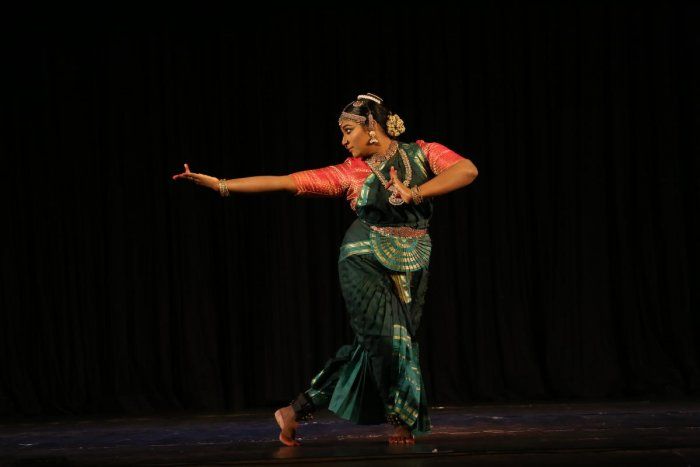
That day at the Thiruvarur Thyagesha temple, we were adamant to dance at the temple compound because we considered it a pilgrimage and assurances of our “cleanliness” by our teachers combined with the Brahmanical reverence for the institution ensured that we could perform the choreography of the last century with our supposedly pure bodies of of non-hereditary lineage.
It was a reminder that we could only dance as long as the powers that be deemed us ‘pure’ enough. As my indignant seething body danced, I thought of the hereditary dancers for whom it is a criminal act to perform in the temples even today, who were made to leave the stage so that our oppressor caste bodies could take their place.



